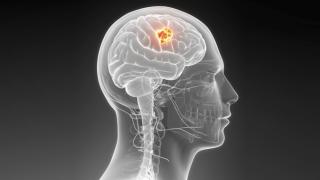Why is CAR T cell therapy — an immunotherapy that engineers a patient’s own T cells to target cancer — so effective for many types of cancer, but not for glioblastoma, a disease that is notoriously resistant to all types of treatment?
To answer that question, a five-year, $3.75 million grant from the National Institute of Neurological Disorders and Stroke at the National Institutes of Health will fund a new study that should bring new hope to glioblastoma patients.
It’s a collaborative effort between City of Hope and Virgina Tech. At City of Hope, the principal investigators are Russell Rockne, Ph.D., a mathematical oncologist, and Christine Brown, Ph.D., deputy director of the T Cell Therapeutics Research Laboratory. The co-investigators are Margarita Gutova, M.D., and Vikram Adhikarla, Ph.D., at Virginia Tech, and the principal investigator is bioengineer Jennifer Munson, Ph.D.
“We’re using new technologies to understand, at a deep mechanistic level, the interplay between brain dynamics, anatomy and fluid flow to learn how CAR T cells can get to and target brain malignancies,” said Brown, The Heritage Provider Network Professor in Immunotherapy.
The team is going to track the complex journey — with its many obstacles, detours and obscure pathways — that CAR T cells make as they travel through the fluids in the brain and brain tumors.
“The thing we’re really excited about is how we’re bridging clinical trial discovery with bioengineering and mathematical approaches,” said Munson. “By looking at this problem from different angles, we can find the newest and most innovative ideas.”
How the Three Disciplines Work Together
As a leader in the development of CAR T cell therapy, with more trials of this treatment for brain cancers than any other institution in the U.S., City of Hope is uniquely positioned for this research.
“We’re developing and engineering the CAR T cells for this study, and at the same time we’re doing patient analysis to make sure that what everyone is doing has relevance in the clinic,” said Brown.
Brown sends the CAR T cells to Munson, the bioengineer, who uses advanced imaging techniques to track their course in mice and also in tissue-engineered systems.
“We create a three-dimensional system outside of a patient’s body — what we call a ‘tumor in a dish’ or an ‘organ on a chip’ — so that we can measure and track the movement of T cells to predict what the therapeutic response might be,” said Munson.
Then mathematician Rockne takes that data and develops computational models that can provide greater insight into how the T cells travel through these fluids — a journey that is similar to the course of a river, but far more complex.
“There are equations that can predict how a river flows, with all of its different machinations and variations, with its currents and eddies and rocks and forks — but a river just flows on the surface, from high ground to low ground,” Rockne said. “What makes this project much more challenging is that in the brain, the vasculature that carries the blood acts like a three-dimensional river.”
The models will allow researchers to determine exactly where T cells travel — where they are blocked or go astray, where the tumor might be leaking — on their journey through the brain.
Immediate Benefits, Long-Term Potential
Patients won’t have to wait five years to profit from this study, which continually cycles back to Brown and the CAR T cell glioblastoma trials.
“One of the benefits of City of Hope is how quickly we can implement the knowledge we gain into new therapies for patients,” she said.
That’s because, at the same time that fluid flow is being analyzed and modeled in the lab, researchers are also examining MRI data collected from trial patients.
“The immediate impact is that we will be learning how to identify patients that have a favorable fluid flow dynamic and are most likely to respond to CAR T cell therapy. It can also help us determine the best location for an infusion,” said Rockne. “And for those patients with an unfavorable flow, we can choose another type of treatment — both ways of improving patient outcomes.”
In the long run, understanding fluid flow will also pave the way for improving dynamics that hinder effective therapy, with technologies such as focused ultrasound and convection enhanced delivery.
The study can have even more far-reaching results.
Glioblastoma, the deadliest and most common type of brain cancer in adults, is not only resistant to CAR T cell therapy — it’s resistant to all types of treatment.
“The overall survival rate for patients with glioblastoma hasn’t improved in many years,” said Brown. “This study can also show us how chemotherapy and many other treatments can be more effectively delivered to the brain.”


